By Kiyomi Casey
(This is part of our ongoing series, Lost Kinjo– a look at the more than 40 Japanese communities that disappeared after World War II. It is supported by funding from the California Public Library Civil Liberties Project and the Takahashi Family Foundation.)
Until the 1950’s agriculture was the largest part of Orange County’s economic prosperity. Fertile farmland on either side of the Santa Ana River became available for purchase in the late 1860’s. Prior to the 1880’s Orange County’s biggest crop was grapes, but when they were taken out by disease, it paved the way for citrus, and other crops to grow. According to the Orange County Historical Society by the 1930’s Orange County was producing a sixth of the nation’s Valencia orange crop.
Despite the Alien Land Law of 1913 prohibiting any issei (first generation Japanese) to own land, Japanese people found a way to be farmers. They would often lease land, or purchase it under the names of their American born children. Prior to Executive Order 9066 which authorized forced removal of Japanese people from the west coast, Japanese Americans contributed a significant portion of produce.
In an article published by the The San Francisco News on March 9th of 1942, agriculture coordinator for the Japanese American Citizens League warned that the “removal of the Japanese would disrupt the California vegetable industry”. In the same article it was reported that Japanese truck farmers produced crops valued at 40 million dollars annually. Another article from The San Francisco News published earlier the same month, reported that Japanese farmers controlled the strawberry industry, and majority of the truck crops.
“Japanese plantings in celery, tomatoes, peppers, are important and it is estimated that they likewise are responsible for nearly 75 percent of the state’s acreage in cucumbers, onions and spinach.” The San Francisco News 1942.
February of 1942, just two months after the bombing of Pearl Harbor, President Roosevelt issued Executive Order 9066. While the U.S. government had no evidence of disloyalty amongst Japanese individuals, they were sent away from the West Coast and into incarceration camps, regardless of citizenship status. At this time Japanese people were such an integral part of the agricultural workforce that the Bureau of Agricultural Economics began to raise concern.
The Bureau of Agricultural Economics submitted testimony to the Select Committee Investigating National Defense to discuss the Japanese impact on California agriculture. The testimony highlighted that while Japanese working in agriculture were often thought of as managers or operators, many worked as the primary labor force in the fields.
“Of approximately 40,000 Japanese employed workers over the age of 14 more than 19,000, virtually 50 percent, were employed in agriculture. Of these 19,000 only 5,800 were farm operators. That is to say that some 70 percent of all Japanese in the labor force and in agriculture did not function as entrepreneurs or managers.” Bureau of Agricultural Economics 1942.
The testimony continued to emphasize that the Japanese truck farmers’ skills would be far more developed than any work force that could replace them once they were forced to evacuate their properties. The Bureau of Agricultural Economics said that “some loss of efficiency is inevitable.”
Despite the tremendous positive impact of Japanese Americans on American agriculture, over 120,000 Japanese people, 70,000 of which were American citizens, evacuated from their homes and were sent to incarceration camps. This affected the over 40 Japanese American communities, or Japantowns across California, including farmers in Santa Ana. However, the Japanese community has found a way to recognize those farmers today.
Tanaka farms is a Japanese owned farm in Irvine. The family has worked in agriculture since the early 1900’s when Takeo Tanaka immigrated from Hiroshima to California. His son George was born in California 1922, but fled to Utah during WWII to escape the incarceration camps. After the war, he moved to Fountain Valley to continue farming, and start a family. His son Glenn was born in 1957. In 1998, Glenn Tanaka began to operate Tanaka Farms on Strawberry Farms Road in Irvine, which remains a family owned farm today.
In 2011 Tanaka farms and the Orange Coast Optimist club, a Japanese American basketball league that started after WWII for Japanese athletes who weren’t welcome in other sports leagues, started a fundraiser called Walk the Farm. It was a response to the 9.0 Tohoku earthquake, and raises money to support farmers suffering from natural disasters and support agriculture students. As a tribute to Issei (first generation) and Nissei (second generation) Japanese farmers, Walk the Farm has also been collecting the history of Japanese American farmlands. Japanese families have been participating and sharing their stories from across the United States, including a few farmers from Santa Ana, California.
According to one family history shared to Walk the Farm by Fran Nitta Barnes, the Nitta’s were the first to grow asparagus in Orange County. Shosuke Nitta was a first generation Japanese American. He immigrated to the United States from Yamaguchi Prefecture Japan. Around 1907 he purchased land in Santa Ana, and married Taka Umezaki a few years later. They had three sons, Hitoshi, Minoru, and Mitsuo who all joined the family business.
Hitoshi Nitta was born in 1917, and was in his mid twenties when the United States called for the incarceration of Japanese Americans. Nitta was taken to Poston, Arizona along with a few family members including both his parents. While Nitta’s parents could not be American citizens due to the Alien Land Law, he had been born in California. On February 7th 1966, Nitta was interviewed by Richard Curtiss for the Lawrence De Graaf Center for Oral and Public History, California State University, Fullerton. California State University Oral History Program on his experience during the Japanese incarceration.
Nitta: They [parents] felt that they were at the mercy of the United States government, because technically they were enemy aliens. However, the feeling was that they didn’t see how–or I didn’t see how–the government was justified in expelling native born citizens from a particular area.
Nitta recalled what it was like to arrive at Poston.
Nitta: I had a real deep sinking feeling when we saw the place. It was an area that had been cleared out in the desert, and military barracks had been built. The buildings were ready for occupancy when we got there, but there was still a lot of unfinished work.
The Nitta family’s foreman Sal Quintana who ran the farm in their absence. This allowed them to keep their farmland, despite being forced to vacate.
Nitta: we had financial losses incurred because of the evacuation. We feel that in our lives it was a black spot; however, I feel that a person can’t look back. He shouldn’t look back. I think that a person should remember. If a situation similar to that should arise, the experiences that were involved, and so forth, should be a lesson. However, you should look forward and plan for doing better things in the future.
Despite the discrimination the family faced, they continued farming various crops, with strawberries becoming their sole crop in the 70’s. The family retired from farming in the 1990’s.
The Nitta’s are not the only Japanese farmers from Santa Ana highlighted on Walk the Farm. Roy and Nancy Mitsuuchi began farming strawberries in 1963. In Santa Ana’s neighboring city Garden Grove, Sakamoto Farms, and Takahashi farms also grew strawberries.
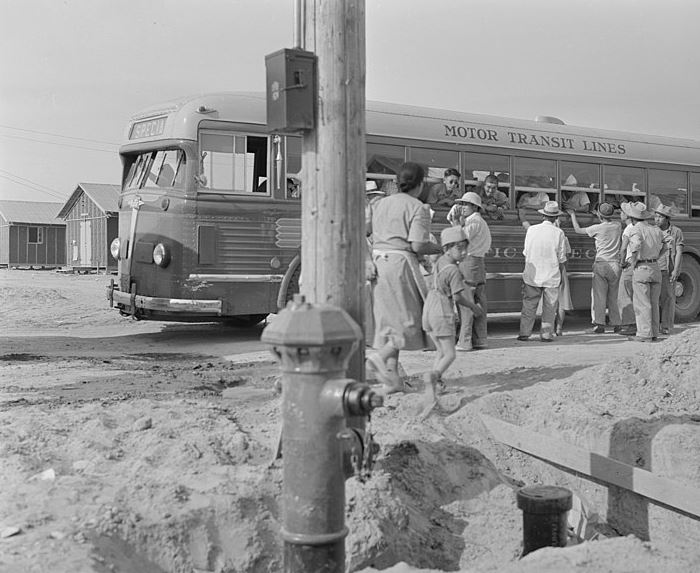
The Santa Ana Register/R.C. Hoiles
While anti-Japanese American sentiment spread throughout America, there were a few who defended the rights of Japanese people. Raymond Cyrus Hoiles, or R.C. Hoiles was an American newspaper publisher who ran the Santa Ana Register, now known as the Orange County Register. He worked as the publisher of the Register alongside his son from 1935 until his death in 1970.
Hoiles was known for being part of the American libertarian movement, and often published his ideas within a daily newspaper aimed at the public, despite many of them being considered radical at the time. Unafraid to publish his political views, Hoiles became one of the first journalists to speak out against the incarceration of Japanese Americans.
In 2007, the Orange County Register republished one of Hoiles columns from 1942. In it he criticizes the United States government, and makes it clear he views the incarceration of Japanese Americans as hypocritical in the context of World War II.
Hoiles: It would seem that convicting people of disloyalty to our country without having specific evidence against them is too foreign to our way of life and too close akin to the kind of government we are fighting.
He goes on to say that while democracy is dangerous, it is also “the safest thing we have”. Hoiles took a stand against Executive Order 9066, and believed in the good of people regardless of racial or ethnic background.
Hoiles: If we are not willing to run any risks and cannot have faith in humanity and regard people innocent until they are proved guilty, we are on the road to losing our democracy.
Hoiles remained consistent in this viewpoint. He criticized a local school board in an editorial during a local court case Mendez v. Westminster which fought for the desegregation of Mexican American children in California Schools. The Orange County Register published his words from 1947.
Hoiles: “It seems that the Santa Ana School Board knows no law except might make right. The members of the board thought they had the power and they wanted to use it. They were not stopped because of their beliefs in Christian, moral and American principles; they had to be stopped by the court ruling against their desire to show their authority. The 14th Amendment to the Constitution prevented them from continuing their un-American, un-Christian desires.”
The Mendez v. Westminster case intertwines with Japanese American History through the connection between the Mendez family and the Munemitsu Family.
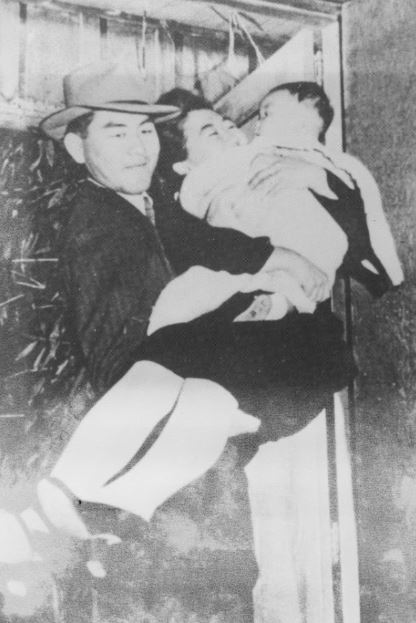
Japanese Americans in Santa Ana Today
After the bombing of Pearl Harbor on Dec 7 1941, many Japanese Americans felt loyalty to the United States. This was proven with around 33,000 Japanese Americans serving in the US Armed forces during WWII. However, some Japanese Americans showed their appreciation for where they lived in other ways. After the war the Japanese community in Orange County presented the Orange County Civic Center, which is located in Santa Ana, with a gift in the form of a 75 by 102 foot Japanese garden and tea house.
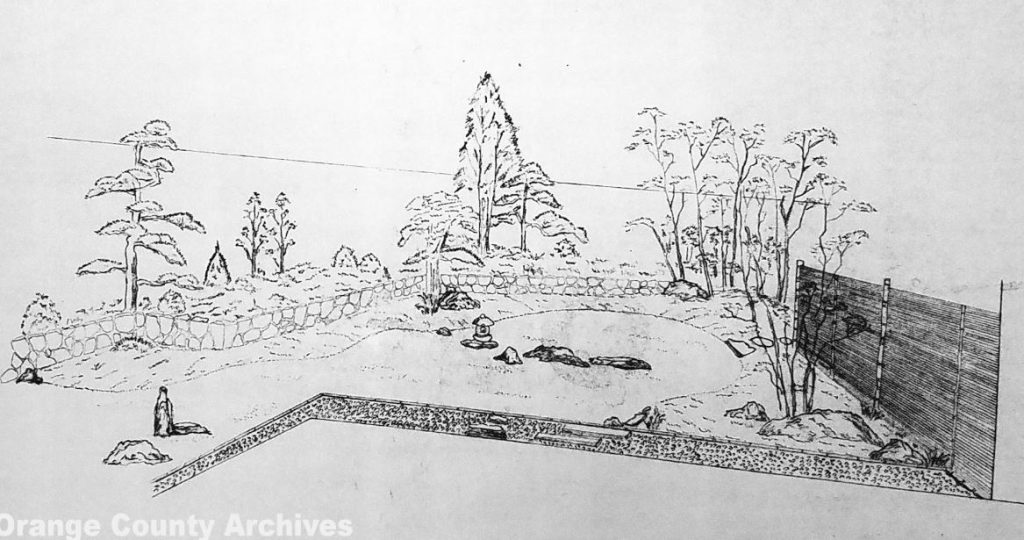
According to Orange County Building Services records, the Civic Center Commission approved the plans for the garden on June 17, 1969. The official agreement was filed on July 2, 1969. The County agreed to allocate a parcel of land in the Orange county civic center for the construction of a Japanese tea house and garden. The gift of the garden was estimated to cost $50,000.
There were three agreements outlined by both the County and the Orange County Japanese American Community Service Inc or JACS, which was a non-profit group representing this special project. The first was that the garden would be constructed between Oct. 1 1969 and Sept. 30, 1970, and upon completion the garden would be donated to the County. The second was that the County would maintain the Japanese Garden, while consulting with the JACS on any major changes. The third was that the Japanese Garden would become the sole responsibility of the county so that the JACS wouldn’t be held responsible for any damage or injury on the property.
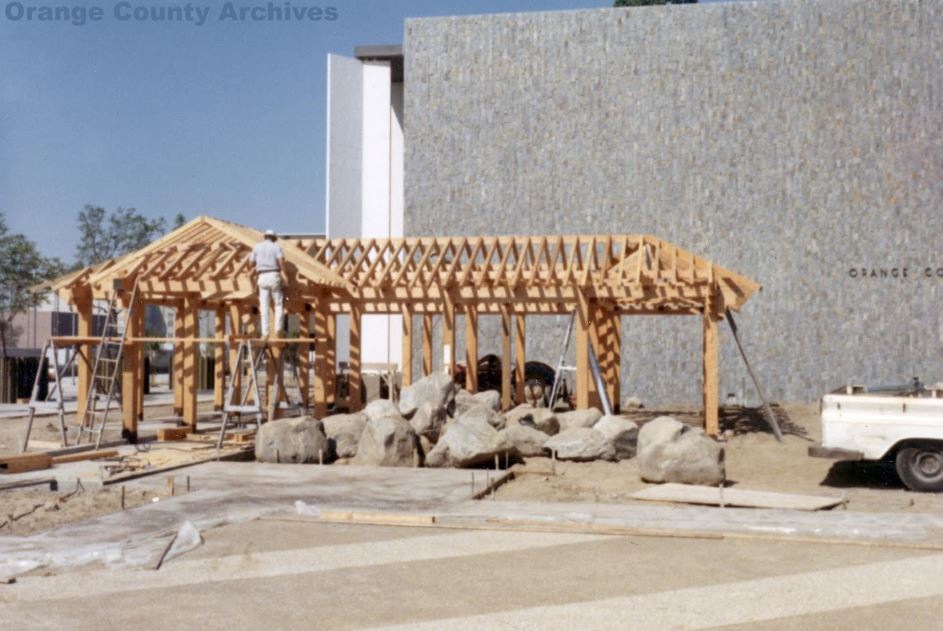
The County worked to restore the Japanese Tea House and Garden to celebrate its 50th anniversary in 2020. In November of 2020 The Pacific Citizen quoted Ron Ono, the Administrative Services Manager and Landscape Architect for the City of Santa Ana on his thoughts regarding the renovation for the 50th anniversary.
“The many Japanese American families that originally donated to build this unique facility were somehow affected by the tragedy of the Japanese American incarceration and their displacement. These pioneers and their children wanted to give back to Orange County a symbol of peace, gratitude and respect in this beautiful place.”
The Japanese Tea House and Garden isn’t the only symbol for Japanese Americans in Santa Ana. In July of 2015, on the corner of Sunflower Avenue and Flower Street the city of Santa Ana hosted an unveiling of a seven foot tall bronze celery stalk titled “We Too Were Once Strangers”. The sculpture was created by artist Richard Turner, and the plaque that accompanies the sculpture includes an inscription by Turner. It reads as follows.
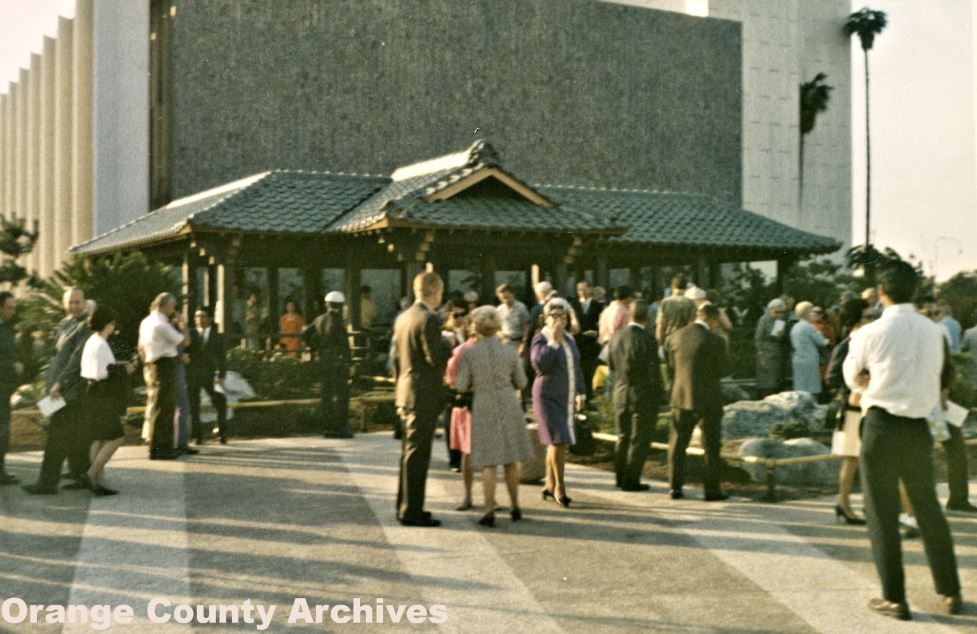
“We Too Were Once Strangers’ is a celebration of the heritage and achievement of the Japanese American farmers of Orange County. In 1940 there were 245 Japanese ‘Issei’ farms in Orange County. The memorial is located on land once cultivated by the immigrant farmers. The produce from the farms was sold at a market in Santa Ana located at Broadway and Fourth Street. Celery was one of the four main crops that were grown. The stone paving of the base recalls pathways in traditional Japanese gardens, which often featured recycled millstones as accents.”
Santa Ana was one of over 40 Japantowns that spanned the state of California. While only three remain, in San Francisco, San Jose, and Los Angeles, Japanese Americans in Santa Ana are still present. They remain represented through cultural landmarks, and organizations such as the Orange County Japanese American Citizens League.
AsAmNews is published by the non-profit, Asian American Media Inc.
We are supported through donations and such charitable organizations as the Robert Wood Johnson Foundation. This holiday season, double your impact by making a tax-deductible donation to Asian American Media Inc and AsAmNews. Thanks to an additional benefactor, all donations will now be matched up to a total of $12,000.
Please also follow us on Instagram, TikTok, Facebook, YouTube and X.

